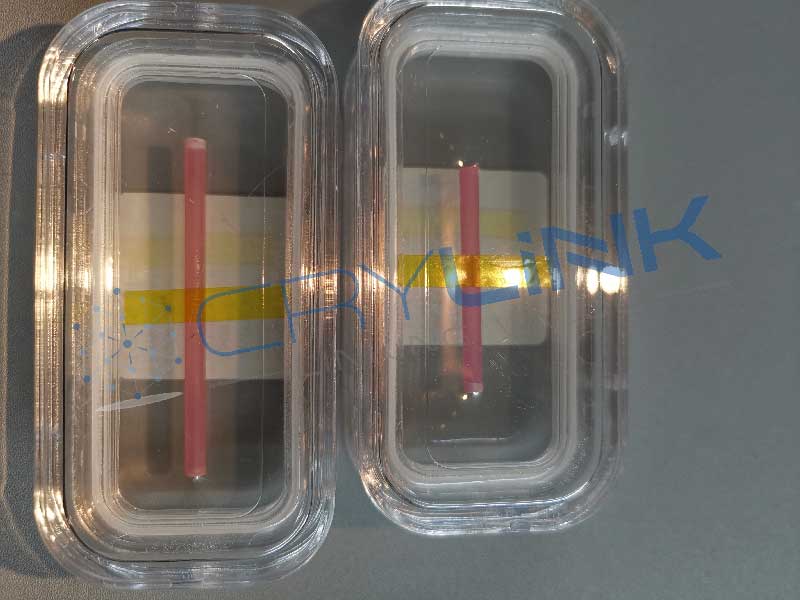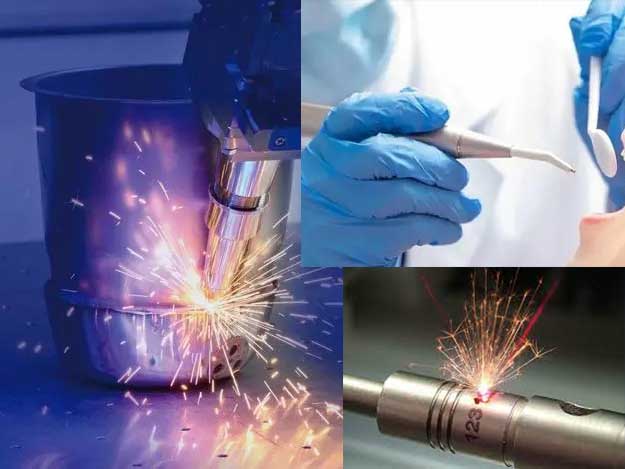Er:YAG crystal is a laser crystal used in various scientific and medical applications. This crystal has unique properties that make it useful for different purposes, and understanding these properties is essential in making the most out of the crystal’s capabilities. This article will provide an in-depth guide on Er:YAG crystal, its properties, and applications. We will also discuss its potential limitations and prospects.
What is Er:YAG Crystal?

Er:YAG, or erbium-doped yttrium aluminum garnet, has a crystal structure that belongs to the cubic crystal system. The crystal lattice of Er:YAG is composed of aluminum, yttrium, oxygen, and erbium ions.
Each Er:YAG crystal unit cell contains eight formula units with the chemical formula Y3Al5O12. The aluminum and yttrium ions are located in two different crystallographic sites, forming a distorted octahedral configuration. The oxygen ions are coordinated with the aluminum and yttrium ions, forming a framework of corner-sharing tetrahedra.
The erbium ions are incorporated into the lattice as dopants, replacing yttrium ions. They occupy specific sites in the crystal structure, creating a perturbation in the crystal lattice that can lead to energy-level transitions and the production of laser emission. The concentration of erbium ions can affect the performance of the crystal in various applications, with higher concentrations leading to greater laser efficiency.
Overall, the unique crystal structure of Er:YAG, with its cubic symmetry and specific arrangement of ions, enables its unique properties and makes it a valuable material for a wide range of applications, particularly in laser technology.
Properties of Er:YAG Crystal
Er:YAG crystal has unique properties that make it useful for various scientific and medical applications. These properties include:
- Optical Properties: One of the most important properties of Er:YAG is its optical properties. When excited by a source of energy such as a flashlamp or diode laser, the erbium ions within the crystal become excited and emit laser light. The laser light produced by Er:YAG has a wavelength of around 2.94 micrometers, which is in the mid-infrared region of the electromagnetic spectrum. This makes Er:YAG a valuable material for use in laser technology.
- High Absorption and Low Scattering: Er:YAG has a high absorption coefficient and a low scattering coefficient, meaning it can efficiently absorb and transmit laser light. This property makes Er:YAG ideal for medical and dental applications, where it is used for procedures such as cavity preparation and tissue ablation.
- Non-Toxic and Biocompatible: Er:YAG is non-toxic and biocompatible, which means it can be used safely in medical applications. It is commonly used in dentistry for procedures such as cavity preparation, as it does not damage the surrounding tissue and does not cause discomfort to the patient.
- High Thermal Conductivity: Er:YAG has a high thermal conductivity, meaning it can dissipate heat quickly. This property makes Er:YAG ideal for high-power laser applications, as it can withstand high temperatures without damage.
- Hardness and Durability: Er:YAG is a hard and durable material resistant to mechanical wear and abrasion. This makes it ideal for use in cutting and drilling applications, as well as in the manufacturing of industrial components.
- Others: Er:YAG has various properties except the ones mentioned above, such as high melting point, high damage threshold, low thermal lensing, low quantum defect, etc.
Overall, the unique properties of Er:YAG make it a valuable material for use in a wide range of applications, including medical and dental procedures, laser technology, and industrial manufacturing.
Applications of Er:YAG Crystal
Er:YAG crystal has numerous applications in different fields, including:
- Laser dentistry: Er:YAG lasers are used for various procedures, including cavity preparation, root canal treatment, and gum contouring. These lasers are highly effective for cutting through hard tissues such as teeth and bone while causing minimal damage to surrounding soft tissues.
- Medical surgery: Er:YAG lasers are also used in medical surgery for procedures such as skin resurfacing, scar revision, and tattoo removal. They are particularly effective for these procedures because they are highly precise and cause minimal thermal damage to the surrounding tissues.

- Laser welding: Er:YAG crystals can be used in laser welding due to their high energy output and efficient water absorption, which makes them highly effective for welding metals with high water content.
- Laser marking: Er:YAG lasers are also used for marking and engraving various materials, including metals, ceramics, and polymers. The lasers’ high precision and energy output make them well-suited for creating highly detailed marks and designs.
- Scientific research: Er:YAG crystals are also used in various scientific research applications, including spectroscopy, microscopy, and crystal growth studies. The crystals can be used as laser sources for these applications or as components in optical systems.
Overall, the unique properties of Er:YAG makes it a highly versatile material with a wide range of applications in several industries.
Limitations of Er:YAG Crystal
Although Er:YAG crystal has many benefits, it also has some limitations, such as:
- Cost: Er:YAG crystals can be expensive due to the specialized manufacturing process involved.
- Thermal management: Er:YAG crystals are susceptible to thermal damage, leading to reduced performance and damage to the crystal itself. Effective thermal management is required to prevent thermal damage.
- Laser-induced damage: When subjected to high-power laser radiation, Er:YAG crystals can experience laser-induced damage, leading to changes in the crystal’s optical and mechanical properties.
- Material purity: Impurities in the crystal can impact its performance and cause variations in laser output. Achieving high material purity in Er:YAG crystal is crucial for optimal performance.
- Efficiency: While Er:YAG lasers have a high absorption coefficient in water and soft tissues, their efficiency is lower than other lasers, leading to longer treatment times and higher costs.
- Complexity of use: Er:YAG lasers require skilled operators familiar with the technology and its operation. In addition, proper calibration and maintenance are critical to ensure optimal performance.
Despite these limitations, Er:YAG crystals remain a valuable tool in many applications, and ongoing research and development aim to address these challenges and improve the technology.
Future Prospects of Er:YAG Crystal
Er:YAG crystal has already found several important applications, and its unique properties and characteristics make it an attractive material for use in various fields. In addition, ongoing research and development suggest that there may be additional prospects for this crystal. Some potential areas of interest include:
- Medical Applications: Er:YAG laser systems have been successfully used for various medical applications, including dentistry, ophthalmology, and dermatology. Continued research in these areas could lead to further advancements and expanded Er:YAG crystal use in medical applications.
- Aerospace and Defense: Er:YAG crystal has the potential to be used in the development of advanced sensors and other technologies for aerospace and defense applications. Its unique properties, such as its high thermal stability and resistance to radiation damage, make it an attractive material for harsh environments.
- Energy: Er:YAG crystal has the potential to be used in the development of more efficient and effective solid-state lasers for energy applications, such as laser fusion and plasma generation. Its high efficiency and high output power make it an attractive material for these applications.
- Communications: Ongoing research suggests that Er:YAG crystal may have potential applications in developing advanced optical communication technologies. Its unique properties, such as its high gain and low noise characteristics, make it an attractive material for these applications.
Overall, Er: YAG crystal’s unique properties and characteristics make it an attractive material for use in a wide range of applications. Ongoing research and development suggest that this crystal may have additional prospects, particularly in medical applications, aerospace and defense, energy, and communications.
FAQs
1. Q: What is the primary use of Er:YAG crystal?
A: Er:YAG crystal has various applications, but its primary use is in medical and scientific fields, including dentistry, dermatology, and ophthalmology.
2. Q: How does Er:YAG crystal work?
A: Er:YAG crystal absorbs light at 980nm and emits it at 2940nm, which makes it an efficient and versatile laser source.
3. Q: What are the advantages of using Er:YAG crystal in medical treatments?
A: Er:YAG crystal allows for deeper penetration and better tissue selectivity, making it ideal for medical treatments that require precision and minimal thermal damage.
4. Q: What is the cost of Er:YAG crystal?
A: Er:YAG crystal is relatively expensive compared to other laser crystals, but its high efficiency and unique properties make it a cost-effective option for many applications.
5. Q: What is the prospect of Er:YAG crystal?
A: The prospects of Er:YAG crystal are promising, with continued research and development aimed at expanding its potential applications in fields such as medicine, manufacturing, and communications. Its unique properties, such as high energy output and precise wavelength, make it a valuable material for various emerging technologies.

Frank
Frank graduated from the University of Shanghai for Science and Technology, majoring in optics. As a technical engineer at Crylink Company, he deeply understands crystal materials and laser components.
Related Video(s) with this Article
Related Product(s) with this Article
Related Application(s) with this Article

